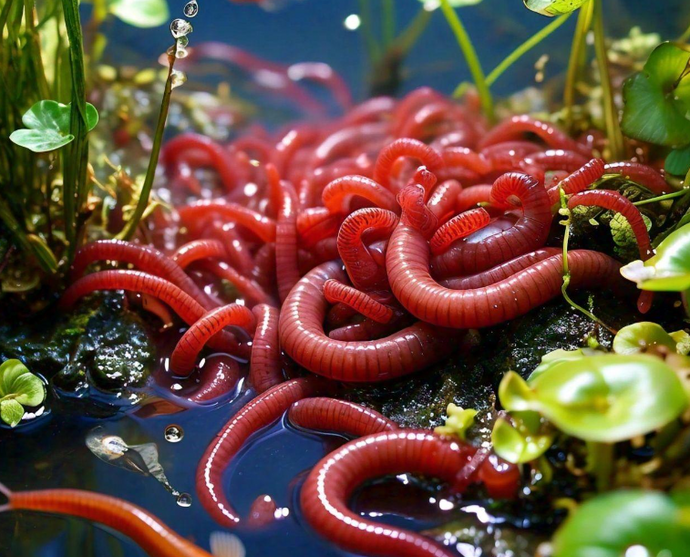Red worms: For organic waste solutions
Red worms: For organic waste solutions
Blog Article
Everything You Required to Understand About Red Wigglers for Composting
Red wigglers, or Eisenia fetida, play a crucial role in the world of composting, transforming natural waste into useful dirt amendments. The process of setting up a worm container and preserving it can position obstacles.
What Are Red Wigglers?

(Worm Farms Near Me)
Native to North America, red wigglers are surface-dwelling microorganisms that prefer moist, cozy environments abundant in decomposing raw material. Their diet consists mostly of rotting plant material, food scraps, and various other natural particles, which they eat and break down effectively. As they absorb this material, they generate nutrient-rich spreadings that enhance soil fertility.
Red wigglers are hermaphroditic, possessing both male and female reproductive body organs, and can recreate promptly under optimum problems. This capability makes them a suitable option for composting systems, as their population can raise swiftly. Their strength and flexibility to numerous atmospheres additionally strengthen their relevance in sustainable waste management practices. Overall, red wigglers are crucial contributors to the process of recycling natural waste into useful garden compost.
Advantages of Utilizing Red Wigglers
Using red wigglers in composting systems supplies countless advantages that enhance both the performance of waste management and the top quality of the resulting compost. These worms, scientifically referred to as Eisenia fetida, are specifically efficient at breaking down organic issue, transforming cooking area scraps and yard waste right into nutrient-rich garden compost at an increased price.
One of the main advantages of using red wigglers is their ability to consume huge quantities of organic material, typically processing their weight in food waste daily. This high consumption rate results in faster decomposition and lowers the quantity of waste sent out to land fills. In addition, the spreadings generated by red wigglers are abundant in crucial nutrients, valuable microorganisms, and enzymes, making them an exceptional fertilizer for gardens and plants.
Furthermore, red wigglers grow in a range of atmospheres, making them adaptable for both interior and exterior composting systems - red wigglers. Their presence in a garden compost container helps to aerate the material, preventing smells and promoting a healthy composting process. Generally, utilizing red wigglers not only adds to reliable waste administration but additionally supports lasting horticulture practices via the manufacturing of premium compost
(red worms near me)
Establishing Up Your Worm Container
To efficiently establish a worm bin, it is necessary to select a proper container that fulfills the demands of red wigglers while providing a conducive environment for composting. A suitable bin can be made from plastic, wood, or metal, with a capacity of at the very least 1 square foot for every extra pound of worms.
Make sure the container has adequate drainage holes to prevent excess moisture, as red wigglers flourish in a wet, but not water logged, atmosphere. red wigglers. The bin needs to also be aerated to provide adequate airflow, stopping anaerobic problems that could damage the worms
A suitable location for the worm bin is index a cool, dark area, without straight sunshine and extreme temperature levels, as red wigglers prefer a temperature series of 55 to 77 degrees Fahrenheit.
Before introducing the worms, prepare bedding materials such as shredded paper, cardboard, or coconut coir, which will certainly supply both habitat and food. Moisten the bed linens gently to develop a welcoming environment for the worms. Consider positioning a cover on the bin to preserve moisture and lower bugs, while ensuring it can be conveniently gotten rid of for upkeep.
Feeding and Treatment Standards
Feeding red wigglers is an essential element of preserving a healthy and balanced composting system. These worms grow on a diverse diet, mostly composed of natural products such as fruit and vegetable scraps, coffee grounds, and crushed eggshells. It is important to prevent feeding them meat, dairy, and oily foods, as these can develop undesirable smells and draw in bugs.
When presenting food to your worm container, slice or shred materials into smaller pieces to promote quicker decay. Start with percentages to gauge the worms' usage price, slowly increasing the amount as they adapt. It is a good idea to alternative feeding places within the bin to motivate comprehensive mixing and oygenation of the garden compost.

Troubleshooting Common Issues
Maintaining a thriving worm composting system can in some cases present challenges that need attention and troubleshooting. Common issues include an undesirable smell, which often shows overfeeding or the visibility of anaerobic problems. To correct this, decrease the quantity of food added and ensure correct oygenation by blending the bed linen material.
Another frequent trouble is the getaway of worms from the container. This can take place due to excessive moisture or improper environmental conditions. Regularly check the dampness levels, going for a moist but not soaked consistency, and preserve optimal temperature levels between 60-80 ° F(15-27 ° C )to develop a comfortable environment for your red wigglers.
Insects, such as fruit flies, can additionally get into worm containers. red wigglers. To combat this, cover food scraps with a layer of bed linen or shredded paper to prevent flies from laying eggs. Furthermore, ensure that any type of food added is fresh and complimentary from mold, which can draw in undesirable insects
Last but not least, if your worms seem inactive, examine for stress factors such as temperature level changes or inadequate moisture. Dealing with these common issues will help maintain a healthy and productive worm composting system.
Conclusion
In recap, red wigglers, or Eisenia fetida, play an essential duty in lasting waste administration with vermicomposting. Their capacity to efficiently convert natural waste right into nutrient-dense spreadings boosts dirt health and wellness and promotes plant growth. Correct configuration and upkeep of a worm bin, along with adherence to feeding guidelines, make certain a successful environment that decreases land fill payments. Addressing common problems immediately additionally sustains the effectiveness of this eco-friendly method, contributing to ecological sustainability and farming efficiency.
Report this page